Ken Block’s Hoonicorn V2: 5 Features You Didn’t Know Existed
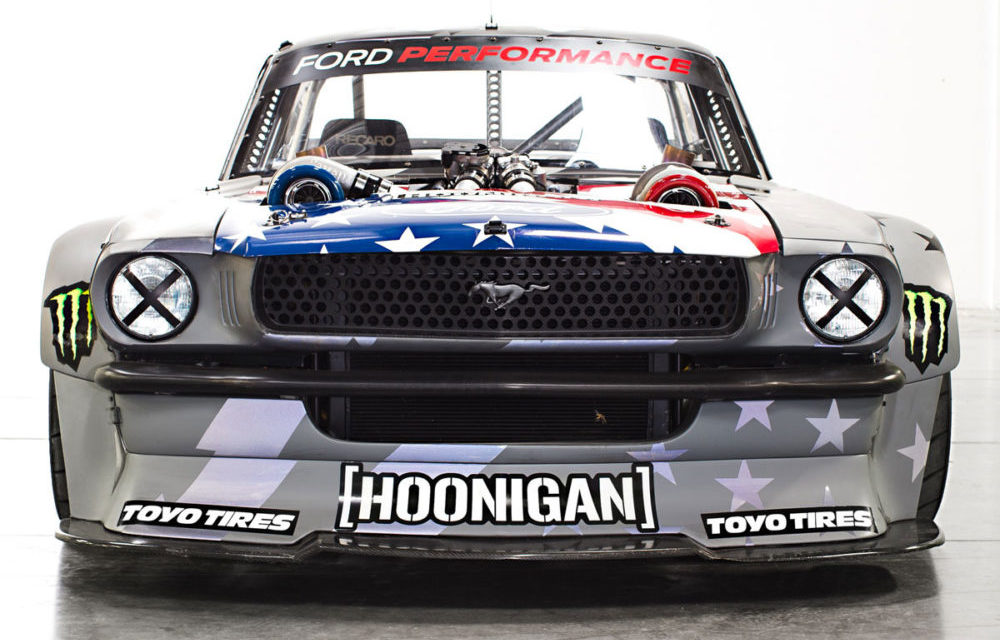
Ken Block’s Hoonicorn V2 has 1,400 horsepower, all-wheel drive, and two turbos. What else makes this Mustang a hoon-machine?
Climbkhana is here and Ken Block’s improved Hoonicorn V2 is a 1,400-horsepower beast. The revised and updated 1965 Mustang coupe is about as close to a stock Mustang as the dinosaurs are to us. Hoonicorn V2 may have added two turbos, but here are five features you probably haven’t heard about.
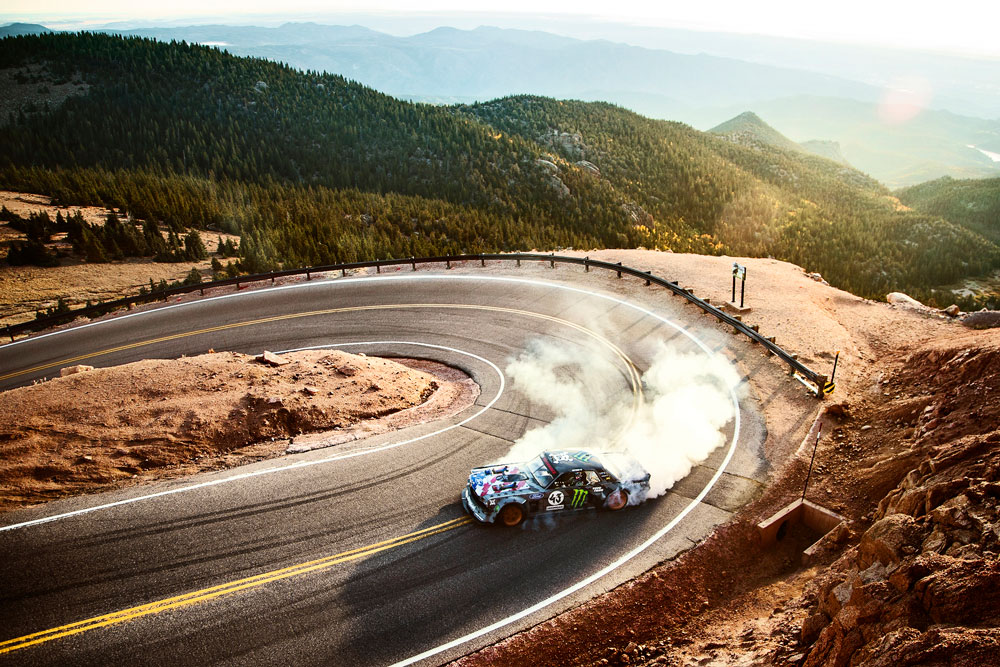
Rally-Spec Handbrake
The Hoonicorn V2 is an all-wheel-drive monster. Sending power to all four tires and generating huge amounts of smoke is what it does best. So how does Mr. Block use the hydraulic handbrake without hurting the drivetrain? Its rally-specific brake is integrated into the clutch system. When the handbrake is pulled, it automatically engages the clutch in the center differential. This allows Block to slide the rear end by fully locking up the rear tires.
ALSO SEE: Ken Block’s Climbkhana: Pikes Peak (Video)
Carbon Fiber Body
The Hoonicorn V2 is a full tube-frame chassis which shares nothing with a 1965 Mustang. The bodywork, on the other hand, retains some of the coupe’s original design, mostly in the roof line. To add strength and save weight, the Hoonicorn’s entire body is made from carbon fiber.
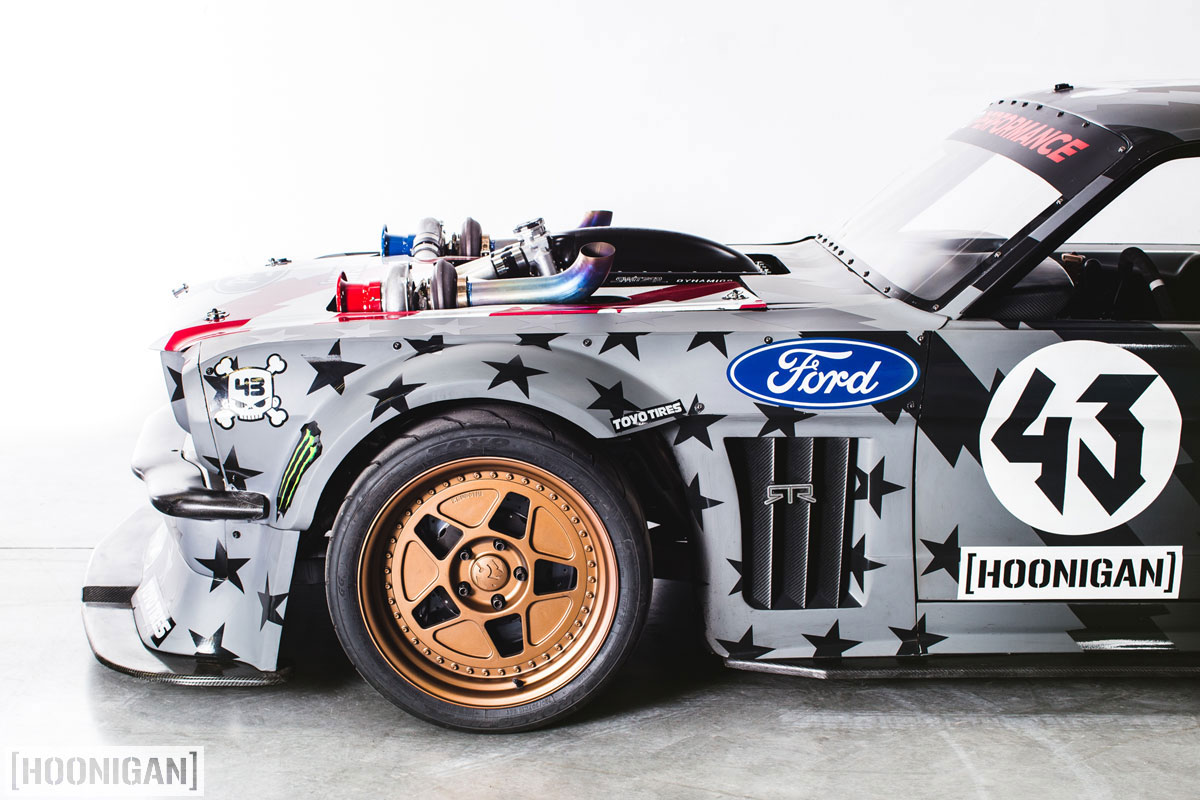
All-American Heart Bolted to a French Transmission
Hoonicorn V2 spends most of its time banging through the gears. Block says that the new twin-turbo setup is so powerful that he struggles to shift gears fast enough. The transmission is a French-built Sadev rally gearbox. It was originally designed for racing in the Dakar Rally. The transmission is only rated to 590 lb-ft of torque. In the Hoonicorn, it’s proven to handle twice that limit.
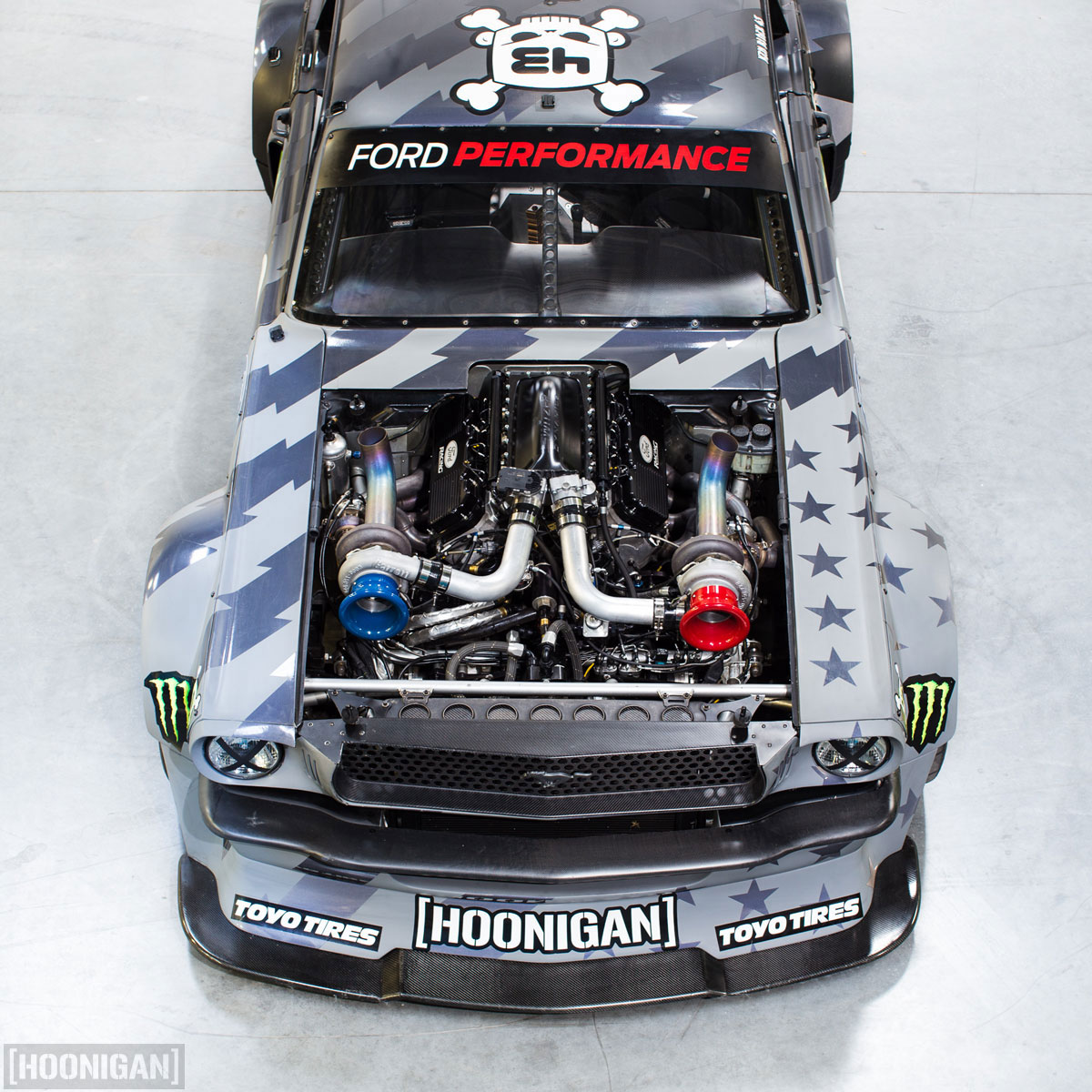
Missing Intercoolers
This feature – actually a lack thereof – sets the Hoonicorn apart from almost all other turbo cars. Intercoolers help cool the air temperature entering the engine after the turbo. Hoonicorn V2 couldn’t add intercoolers because they would restrict the airflow of the intake system. The elevation of Pikes Peak and its thinner air would leave the twin-turbo V8 out of breath by the top of the mountain. Instead, engineers opted to use methanol to cool the combustion chambers, as it burns cooler than gasoline.
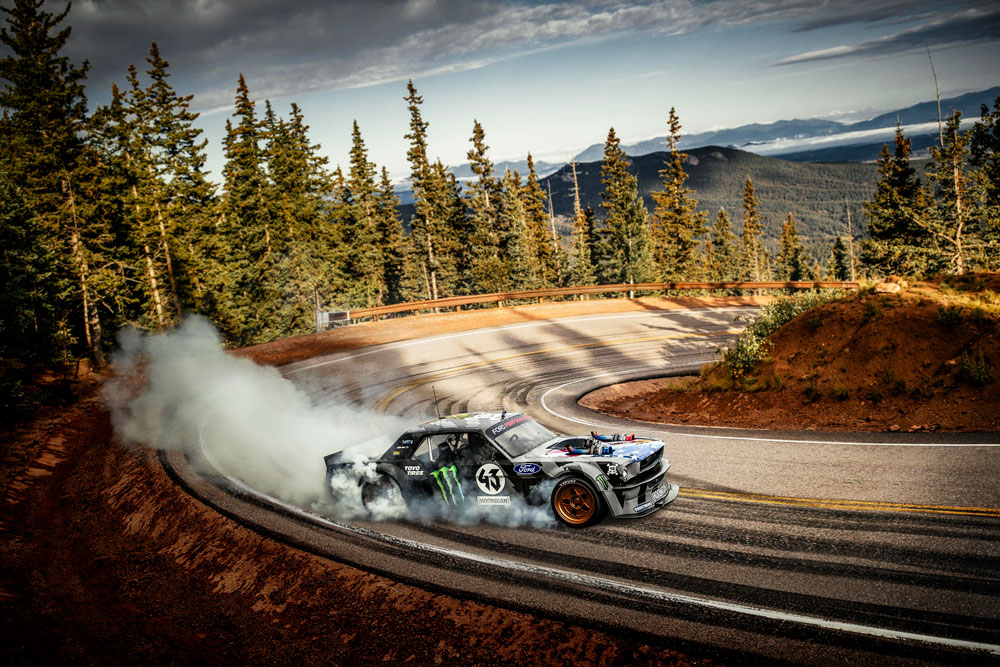
F1-Style Pushrod Suspension
The addition of the all-wheel drive system left very little room for the suspension. So the engineers chose to use an F1 style double A-arm pushrod suspension. This allows for more wheel travel and better shock control. It also allows for much better packaging for the specialized shocks.
